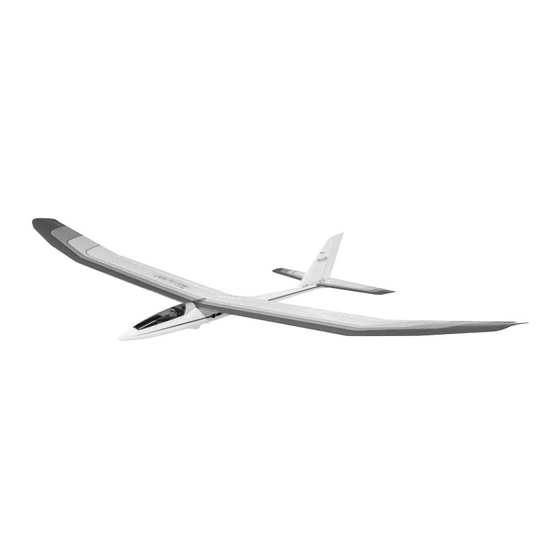GREAT PLANES Spirit 100 Manuel d'instruction - Page 18
Parcourez en ligne ou téléchargez le pdf Manuel d'instruction pour {nom_de_la_catégorie} GREAT PLANES Spirit 100. GREAT PLANES Spirit 100 20 pages.

CHECK LIST
During the last few moments of preparation your mind may
be elsewhere anticipating the excitement of the first flight.
Because of this, you may be more likely to overlook certain
checks and procedures that should be performed before the
model is flown. To help avoid this, a check list is provided to
make sure these important areas are not overlooked. Many
are covered in the instruction manual, so where appropriate,
refer to the manual for complete instructions. Be sure to
check the items off as they are completed.
❏
1. Check the C.G. according to the measurements
provided in the manual.
❏
2. Extend your receiver antenna and make sure it has a
strain relief inside the fuselage to keep tension off the
solder joint inside the receiver.
❏
3. Balance your model laterally as explained in
the instructions.
❏
4. Make sure all hinges are securely glued in place.
❏
5. Confirm that all controls operate in the correct direction
and the throws are set up according to the manual.
❏
6. Make sure any servo extension cords you may have
used do not interfere with other systems (servo arms,
pushrods, etc.).
❏
7. Place your name, address, AMA number and
telephone number on or inside your model.
❏
8. Cycle your receiver battery pack (if necessary) and
make sure it is fully charged.
❏
9. If you wish to photograph your model, do so before
your first flight.
❏
10. Range check your radio when you get to the flying field.
If you are not thoroughly familiar with the operation of R/C
models, ask an experienced modeler to check to see you
have the radio installed correctly and all the control surfaces
do what they are supposed to.
Trimming Flights
It is a good idea to do a couple of trim flights before each
flying session to make sure the plane is still in trim and the
radio is working properly.
Hold the Spirit 100 ARF under the wing with the nose
pointed slightly down and directly into the wind. Launch the
model with the wings level and the nose pointing at a spot
on the ground about 50 feet in front of you. If the sailplane is
launched with the nose up or launched too hard it will climb
a few feet, stall and fall nose first straight down. With the
nose pointed down slightly the sailplane will accelerate
down until it picks up enough flying speed, then level off and
glide forward. Adjust the trims on your transmitter to get the
plane to fly straight ahead in a smooth glide path.
FLYING
Hi-Start Launch
A hi-start is the most common way to launch your Spirit 100
ARF. Follow the directions that came with the hi-start and lay
it out directly into the wind. Place the stake at the far upwind
edge of the flying field so the parachute will blow back onto
the flying field.
Hook the parachute up to the tow hook. Pull the plane back
approximately twice as far as the rubber is long or whatever
the hi-start instructions recommend.
Hold the plane above your head with the wings level and the
nose pointed slightly up and directly into the wind. Give the plane
a gentle push forward to get it flying and it will climb up like a kite.
You should not have to touch the elevator during the launch. Use
the rudder stick to keep it going straight up. You will find the
ailerons are not very responsive during the first part of the
launch. As the rubber relaxes the plane will fly off the hi-start.
The wing and airframe of ANY sailplane—even those having
composite structures—can be destroyed by excessive
stress if a winch is not used properly. Sailplanes with a built-
up balsa/ply wing and thin airfoil are especially vulnerable.
Proper winch operation is the responsibility of its user. Without
appropriate restraint, wing failure can result. Therefore:
• Do NOT attempt full pedal launches with the Spirit
100 ARF.
• Understand that you minimize the risk of wing failure
by launching with a Hi-Start.
• If you must launch with a winch, please use the winch
pedal responsibly!
Great Planes subjects all new airplane kit and ARF models
to rigorous stress-testing. Tests showed no weakness in the
Spirit 100 ARF wing during hi-start or winch launching.
Winch launches were conducted in a reasonable manner,
knowing that overzealous use could fold the wings.
18
